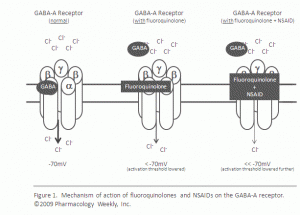A common refrain of mine is the lack of drug testing in women, especially pregnant women and relative to the enormous hormone changes women experience across a cycle, across pregnancy or postpartum and frankly across the lifespan. Hormonally, a 16 year old is not the same as a 45 year old. A woman’s biochemistry is not the same early in her cycle as it is late in her cycle. Nor is it the same when she is on oral contraceptives or hormone replacement therapies compared to when she is not and most especially, the pregnant woman’s biochemistry is hugely different than that of a non-pregnant woman. And yet, despite the lack of testing, lack of data, and limited understanding about how medications work relative to a woman’s hormonal state, women, pregnant and non-pregnant alike, are routinely prescribed medications for which we have a very poor understanding of the basic pharmacokinetics (how a drug travels through the body) or pharmacodynamics (what it does and how it works).
Ever so slowly, this may be changing. A group of researchers from the University Chicago, recently published a study on the Influence of Body Weight, Ethnicity, Oral Contraceptives and Pregnancy on the Pharmacokinetics of Azithromycin in Women of Childbearing Age. Though the study was small with only 53 pregnant women and 25 non-pregnant women, it represents one of the few published pharmacokinetic studies done on a drug routinely prescribed to pregnant women that evaluates hormone state.
Azithromycin: the Most Common Antibiotic Prescribed During Pregnancy
Azithromycin, more commonly known as Zithromax, Azithrocin, Z-Pack or ZMax, is the most frequently prescribed antibiotic for a range of bacterial infections of the ears, skin, throat. It is believed to be safe during pregnancy, despite having a pregnancy category rating B (a designation given a medication that has not been tested in human pregnancy but appears to be safe in animal studies). Some research shows that Azithromycin appears to have no more adverse reactions than other antibiotics, but whether it is truly safe, whether pregnant pharmacokinetics are different than non-pregnant or how they are different had never been determined. The University of Chicago study demonstrated what many have always suspected:
- pregnant women metabolize medications differently (more slowly) than non-pregnant women
- oral contraceptives slow drug metabolism
- and interestingly enough, African American women show different pharmacokinetic patterns than Caucasian, Hispanic, Pacific Islander or Asian women
Pharmacokinetics: The Basics of Drug Disposition
The disposition of a drug (how it travels through the body), is affected by a number of physiological variables including plasma volume (greater when pregnant, lower when dehydrated), protein binding (fat soluble drugs travel through the system bound and protected from metabolism-preparation for excretion- by carrier proteins), liver and kidney function (our waste removal systems). Any alteration to these variables affects how long a drug stays in the body, how much of the drug is available to exert its effects on the tissues or organs, and how effectively it is cleared from the system. Determining the disposition of the drug- the pharmacokinetics- is very important for drug dosing and ultimately, safety. Every one of those drug disposition variables is affected by the hormone changes of pregnancy, postpartum (menstruation, menopause, oral contraceptives, HRT, etc.).
In the case of Azithromycin, pregnancy significantly slowed metabolism and clearance of the drug in pregnant Caucasian, Hispanic, Pacific Islander and Asian women, but not apparently in African American women or women not taking oral contraceptives. Translated, this means that pregnant Caucasian, Hispanic, Pacific Islander and Asian women were exposed to more drug, for a longer period of time, than were African American women. Ditto for women taking oral contraceptives versus those who were not taking oral contraceptives.
The researchers did not investigate whether hormonally-related changes in immune function interacted with the pharmacodynamics of the drug–rendered it more or less clinically effective. Nor did they evaluate whether or how other medications may have influenced drug disposition. As an aside, women in the pregnant group were taking more medications, in addition to the antibiotic in question, than the non-pregnant group.
What this research does show, however, is that hormones, or at least ‘hormone state’ affects drug disposition significantly. Additional studies are needed to determine how and if more customized dosing is required in pregnant and non-pregnant women alike.
This article was posted previously in September 2012.















